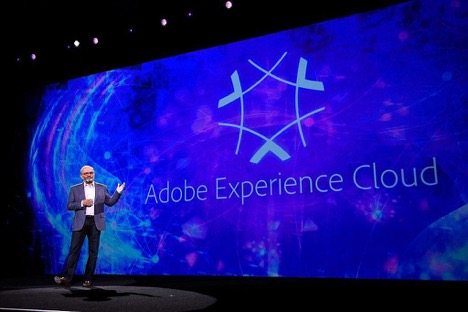Skift Take
Advances in cross-device marketing orchestration are shifting how brands engage consumers on a more personalized basis across their entire customer journey by delivering the right content in the right channel at the right time.
As defined by Forrester: “Marketing orchestration is an approach to marketing that focuses not on delivering standalone campaigns, but instead on optimizing a set of related cross-channel interactions that, when added together, make up an individualized customer experience…. For the marketer, marketing orchestration can deliver higher revenue, increased loyalty, and greater internal efficiency.”
In March 2017, Adobe launched its new Adobe Experience Cloud to make marketing orchestration a much more streamlined process. Experience Cloud is a comprehensive series of cloud services to help companies align their inbound and outbound digital systems more effectively with one consolidated platform to deliver more personalized customer experiences.
Comprised of Adobe Marketing Cloud, Adobe Advertising Cloud, and Adobe Analytics Cloud, the Experience Cloud leverages Adobe Sensei’s machine learning and artificial intelligence capabilities, and it integrates seamlessly with Adobe Creative Cloud and Document Cloud.
The end result is a structured framework to deliver a better brand experience.
For example, imagine a millennial female business executive is searching Google for a business hotel in Midtown Manhattan on a mobile device. A few days later, she performs a similar search on an OTA site on her desktop, where she narrows her options down to a few hotels in various hotel groups.
Neither time she converts, but those two searches provided a lot of data about her travel preferences, because travel marketers now have the analytics tools to connect that cross-device behavior to one individual. It’s enough data, in fact, for one of the hotel groups to post a dynamic ad on the customer’s Facebook page for a specific hotel, which it thinks best aligns with her psychographic makeup, as determined by her past online viewing and social media behavior.
Let’s say she then converts and purchases that suggested hotel on a metasearch site. The hotel group sees this, and then delivers a welcome video via email with links to tours and activities that also align with her travel preferences.
Just before her trip, the hotel bot messages her phone at an appropriate time to tell her that she’s been upgraded to a suite, and then during her stay, she sees a YouTube banner promoting a new Broadway show that she shared on Instagram. The hotel concierge might even offer her a discount on theater tickets for that show, without her asking, or maybe the hotel’s social media person sent her a review of the show.
“It’s moving beyond the core framework of the customer journey to deliver anticipatory service for customers throughout their trip with dynamic messaging that engages and inspires,” suggests Julie Hoffmann, Head of Industry Strategy & Marketing – Travel & Hospitality at Adobe.
“If I already know you’ve booked, as a marketer I shouldn’t reach out just prior to check-in with a transactional request, ‘Instead I have the opportunity to deliver messages of joy, such as: ‘We’re excited that you’re almost on your way, in seven days you’ll be experiencing luxurious accommodations and unique localized cuisine that will surprise and delight you. Check out our top selections to inspire your journey.’ Delivering messages in the moment that bring happiness and joy to their day.”
For many travel brands, however, they’re still catching up to the potential of marketing orchestration as they strive to align their marketing, sales, IT departments, and data capture vendors more closely. Digital integration is everything in online customer experience today, and customer experience is what differentiates market leaders from laggards in our era of data and device proliferation, compounded by rising customer expectations.
Digital integration delivers better brand engagement, above all else.
“From a travel perspective, that interconnectivity, that integration, is critical for all aspects to come together and deliver on messaging and communications, especially when you’re orchestrating an entire customer journey,” says Hoffmann. “A lot of customers are cross-shopping. They’re switching devices. You identify and recognize them in one place, and then find them in another location. As a marketer, it’s paramount to be aware of it all, both where they are in their journey and whether they are in market vs. out of market.”
At the same time, our female business traveler might ask some of the employees at the hotel for personal travel recommendations. Maybe she ordered items in-house on the hotel’s IM platform, as well, that may or may not relate to her loyalty member profile. She’s evolving, perhaps, trying different things, exploring the world around her, and looking for new ideas and guidance when she wants it.
“The hotelier needs to be aware of what is happening throughout that entire journey,” explains Hoffmann. “The Adobe Experience Cloud helps deliver travel experiences that are timeless by integrating Analytics, Marketing and Advertising to support the customer journey full circle. Bringing all of these together allows us to power that and help brands to win the experience.”
Reporting by SkiftX Editor Greg Oates. Download the 2017 Digital Transformation report from Skift, Adobe, and Epsilon here.
The Daily Newsletter
Our daily coverage of the global travel industry. Written by editors and analysts from across Skift’s brands.
Have a confidential tip for Skift? Get in touch
